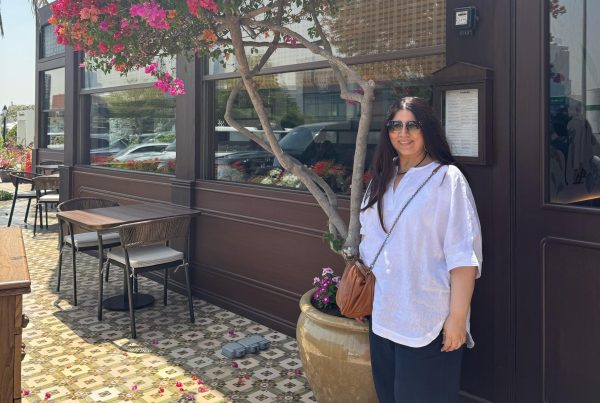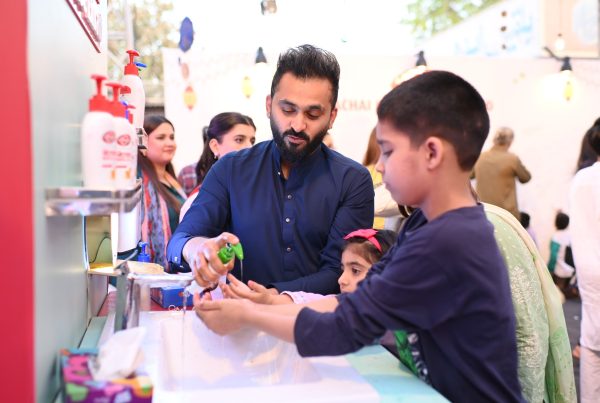Fashion is no longer an expensive hobby for bored housewives who have too much money and time on their hands. Nor is it the launch pad to pseudo-stardom for people without a skill to their name. Here’s to a new era of young fashion graduates…
Fashion is Pakistan’s new cash cow. Right? Well, not exactly. While so many people step into fashion expecting to carve out a lucrative slice of this seemingly rich pie, not many of them realize how difficult it is to establish and run a business in a city that is always half shut. If fashion entrepreneurs (that would be anyone dependent on fashion for a living, which includes myself) aren’t the half getting shut down, then they most definitely are the half getting attacked for being up and about. It’s a no-win situation! With problems running way deeper than the benefits of maintaining a retail operation like The Designers, Asad Tareen is only too aware of what it takes to run a fashion business in Karachi.
His monthly electricity bill easily touches the two hundred thousand mark (ironic, as the electricity supply is as brief as Mallika Sherawat’s costumes in Hiss) and he was pestered to pay thousands of rupees in ‘bhatta’ (in the name of charity) by a religious party one day before he was to host an event at his store. But Asad Tareen is as resilient as the rest of the city.
Not only did he proceed with the much anticipated launch of seven new labels (out of thirty now available at The Designers) but he also told me that he is now officially a ‘buying house,’ which means he will be selecting designer collections to buy instead of stock by consignment. If I’m not mistaken, this is the first time a fashion retailer has taken this initiative for promoting local designers!
So it was a hot yet happening evening when designers Adnan Pardesy, Mohsin Ali, Akif Mehmood, Wardha Saleem, Sadaf Malaterre. Erum Khan (from Islamabad) and The House of Haroon (designed by sisters Sana and Sarah) stepped into the multi-retail store with considerable hoopla, defying gravity of the situation the city has been in. It was an evening heralding the youth, the new future of fashion.
One saw Mohsin Ali and Akif Mehmood – PIFD graduates and PFDC & Sunsilk Fashion Week success stories – making their debut into Karachi. Excited by the new market, they launched Eid collections that catered to a much younger clientele than what The Designers is generally used to. Extensions of what they have shown at fashion weeks, the collections tapped into ethnic elements while playing with bias-cut silhouettes that are still all the rage. Their foray into untested Karachi waters was fresh but also seemed a bit unsure.
 Karachi native and IVSAA textile graduate Wardha Saleem was much more confident in her vision. Her forte being textiles, the focal point of her collection was organic cotton highlighting her exclusive hand block prints. It was an impressive capsule collection that had the vision and foresight of an evolving brand. I, for one, have enjoyed Wardha Saleem block prints immensely. Her animal prints are much more exciting (as well as exclusive) than the generic lawn prints available in the market. Wardha was also the technical hand behind Tapu Javeri’s KaraChakra screen-printed silk scarves and canvas bags earlier this year. Her work is interesting and she managed to maintain that level of interest in the Eid collection.
Similarly, bringing fame to AIFD (Asian Institute of Fashion Design), Adnan Pardesy, the star designer of the evening, launched a much safer collection than what he has shown at fashion week. His magnificent denim collection was a couturier’s passion for detailing and experimentation. This Eid collection was an entrepreneur’s effort in finding some balance between creativity and commercial success. The ethos was the same though a bit of Pardesy’s creative brilliance got lost in translation. That said, with the kind of skills he has, there isn’t a doubt in my mind that he will find the perfect balance very soon.
The need to find balance between wearable fashion and fashion that retains the wow factor is one of the biggest dilemmas of this rapidly evolving industry. Unlike the west where fashion connoisseurs will be experimental enough to wear what they see and appreciate on runways, Pakistani women will look for the safe options and designers will always struggle to make ready to wear that appeals to both. It really isn’t their fault.
The second dilemma, often spiraling out of control, is cost effectiveness. Many of these young labels are way too expensive to be acceptable; one saw price tags up to 24,000 on some of them and except for a few odd pieces, nothing fell within the ten thousand bracket. That was quite shocking considering the fact that established designers are now easily producing double the quantity for half the price.
“We are also offering production facilities for designers who stock with us,†Asad Tareen confided when questioned on production. “We know that young designers have production issues which lead to price hikes. We are trying to support them in whichever way possible.â€
Advice to the young and restless: raise production and lower the cost. The ready to wear revolution is all about affordability and easy access. Also, identify your buyers and focus on your niche market. Don’t attempt to please everyone as you’ll end up impressing no one. And lastly, keep pumping information into the media’s public eye via fashion activity that you must be part of. You are the future of Pakistani fashion; let there be light!
The way I see it, Pakistani fashion today can be segmented into three divisions: the pioneers, who are revivalists and are more or less focusing on couture and keeping Pakistan’s brilliant crafts alive. This band would cover Bunto Kazmi, Faiza Samee, Rizwan Beyg, Sana Safinaz, Shamaeel and Nilofer Shahid.
The middle tier comprises designers that have a deep understanding of ancient principles, sound technical skills and above all vast experience with both traditional and contemporary markets. This is the most successful and trailblazing band, which includes Deepak Perwani, Kamiar Rokni, Sonya Battla, Iman Ahmad (Body Focus) and Nomi Ansari amongst others.
The third, baby band is of young and upcoming designers like the ones now stocking at The Designers (including Zaheer Abbas) as well as Sanam Chaudhri, Maheen Karim, Saniya Maskatiya, Fahad Hussayn, Ali Xeeshan, Mohsin, Akif, Feeha Jamshed etc. These are designers with skills but still not enough retail presence to qualify as successful yet. And they won’t be successful unless they raise production and lower prices for ready to wear. A logical question: why would anyone want to pay over 20,000 for a new label when they can purchase a Sana Safinaz or Shamaeel for the same price and any of the middle tier of designers for half the price?









